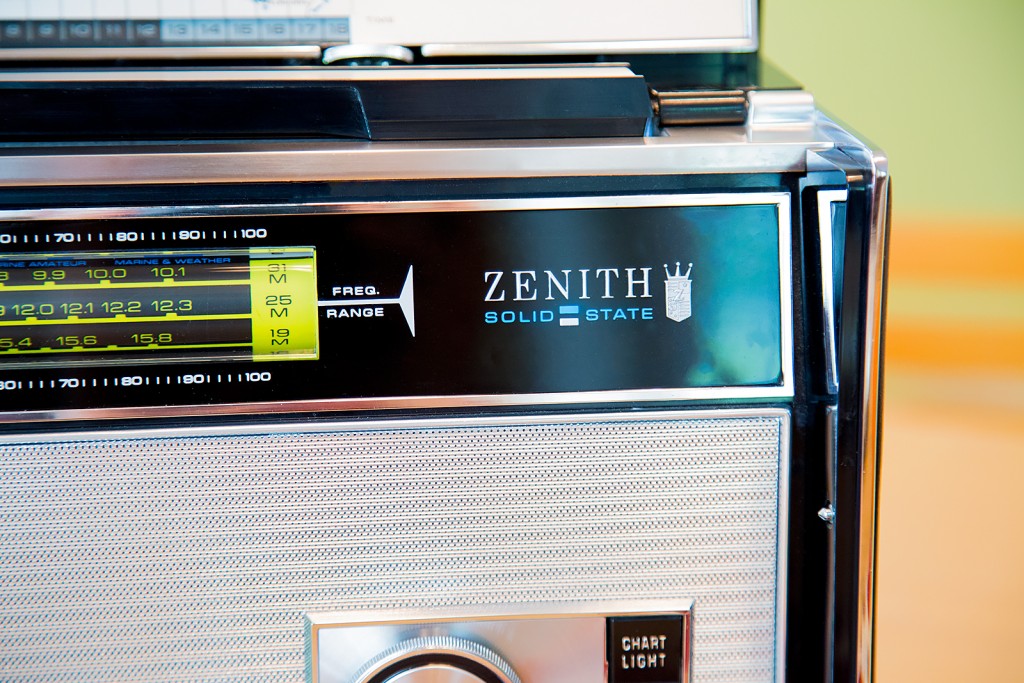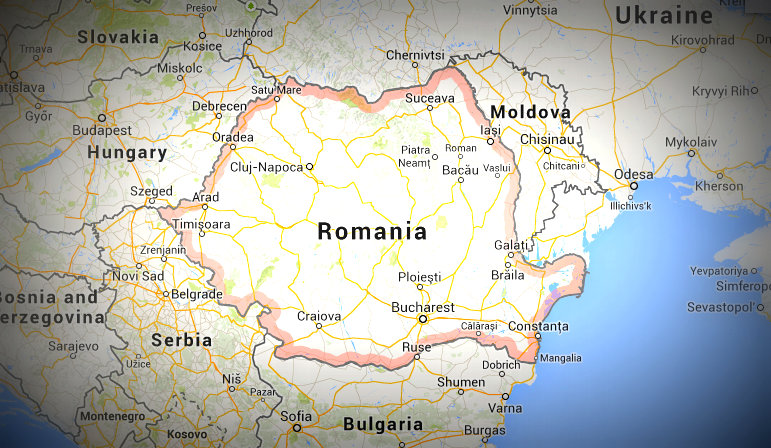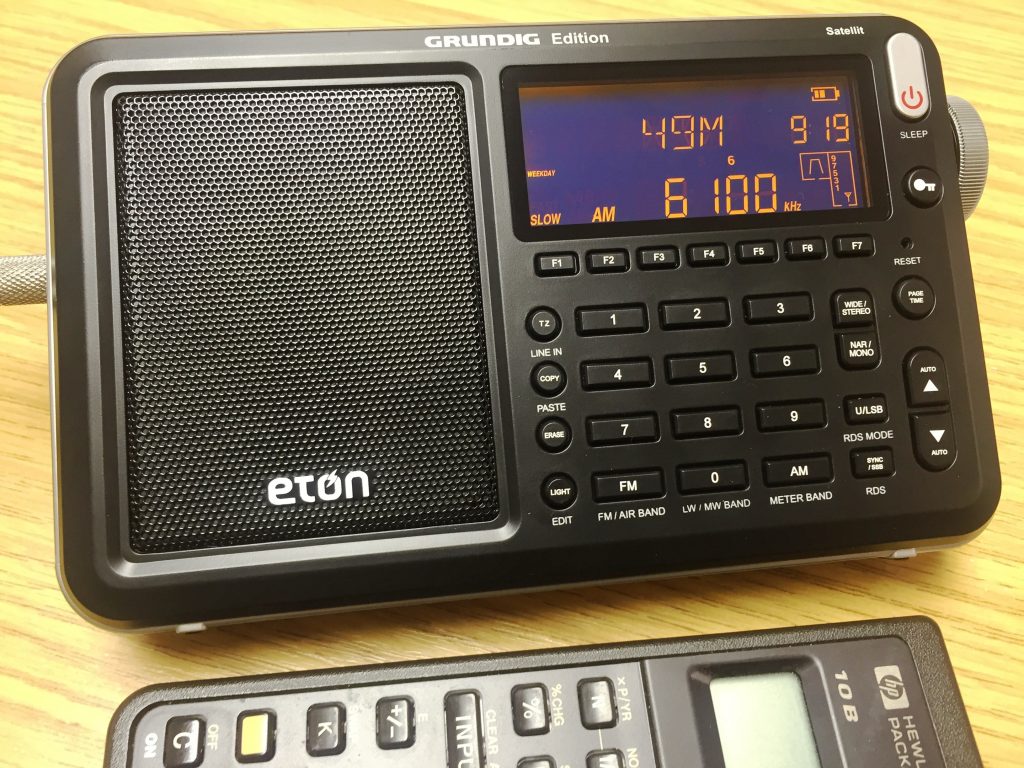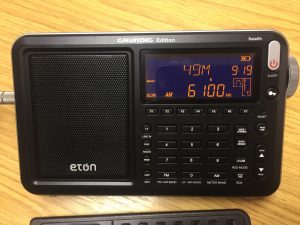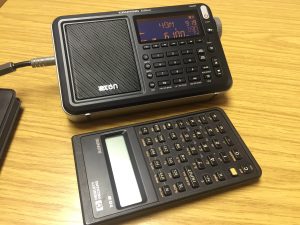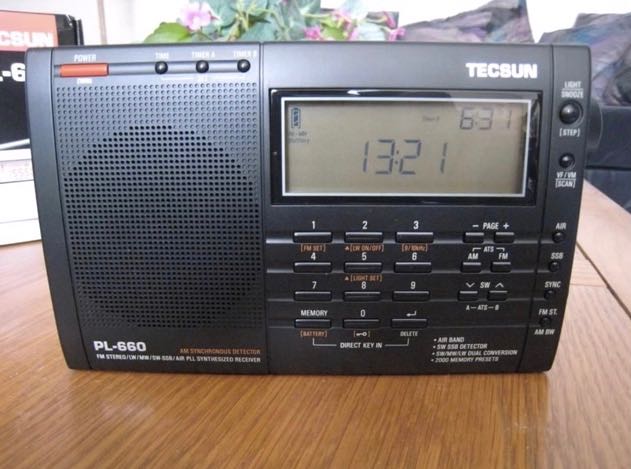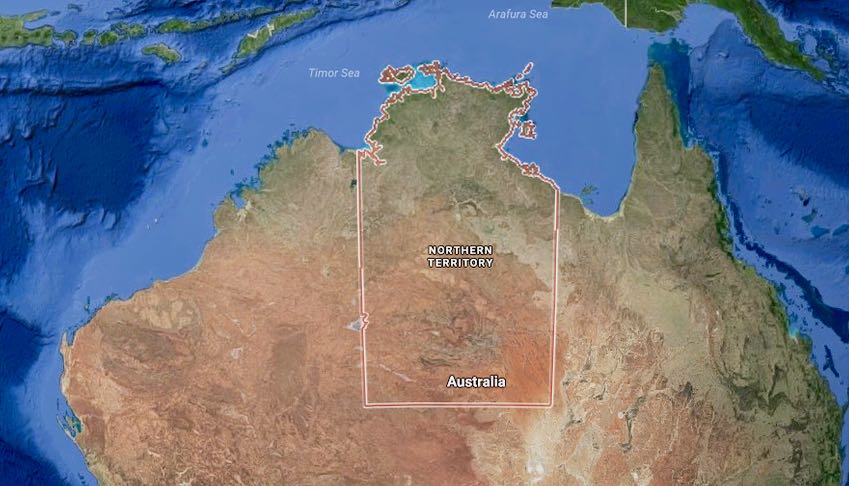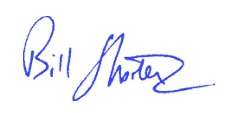Hamurger Lokal Radio via Shortwave Station Göhren, Germany with 1KW to Western Europe:
6190 KHz Every Saturday 07.00 to 11.00 UTC
7265 KHz Every Saturday 11.00 to 16.00 UTC
9485 KHz Every Sunday 10.00 to 13.00 UTC
Contact email: [email protected]Radio City via:
IRRS to Europe on 7290 KHz (every 3rd Friday) between 19.00 to 20.00 UTC
IRRS to Europe on 9510 KHz (every Saturday) between 09.00 to 10.00 UTC
Challenger Radio to Northern Italy on 1368 KHz every Saturdays from 20.00 UTC onwards
Contact email: [email protected]European Music Radio Transmissions via;
WBCQ to Central & North America on 5130 KHz on 18th February between 23.00 to 00.00 UTC
Shortwave Station Göhren on 9485 KHz on 19th February between 09.00 to 10.00 UTC
Channel 292 on 6070 KHz on 19th February between 16.00 to 17.00 UTC
Contact email: [email protected]Internet Repeats on 19th February 2017:
EMR will repeat this months Transmissions via two streams running at the following Times:16.00, 18.00, 20.00 UTC
http://nednl.net:8000/emr.m3u will be on 96 kbps /44 KHz stereo for normal listening
http://nednl.net:8000/emr24.m3u will be 24 kbps / 22 KHz mono will be especially for low bandwidth like mobile phones.KBC via:
Media Broadcast to America on 6145 KHz Every Sunday between 00.00 to 01.00
Contact email: [email protected]Hobart Radio via:
Channel 292 to Western Europe on 6070 KHz Saturdays fortnightly between 09.00 to 09.30 UTC next airings: 21st Jan and 4th February.
WRMI to Americas, Asia/Pacific on 9955 KHz Sunday between 04.30 to 05.00 UTC
WRMI to Americas, Asia/Pacific on 9955 KHz Tuesday between 23.30 to 00.00 UTC
WBCQ to North America on 5130 KHz Mondays 04.30 to 05.00 UTC
Contact email: [email protected]For outside the listening area please try the Twente/Netherlands Web RX at http://websdr.ewi.utwente.nl:8901/
You can also hear many European free and alternative stations via the Internet at: http://laut.fm/jukebox
Radio Channel 292 Transmission schedules on 6070 KHz (on the air every day):
http://www.channel292.de/schedule-for-bookings/Radio Mi Amigo Transmission schedules:
http://www.radiomiamigo.es/shortwave
Tag Archives: shortwave
Shortwave Radio Recordings: Radio Romania International
Like a lot of shortwave radio listeners, since I was a kid, I’ve enjoyed tuning my radio to parts of the world where events are unfolding. There’s something tangible–something that is transportive–when you listen to a news coming directly from the source, on air and originating from halfway across the planet.
I believe, listening to government broadcasters, you get a much better picture of what is actually happening. For example, sometimes the broadcaster devotes the whole news hour to an important event, or (perhaps even more telling!) doesn’t mention anything at all! The Voice of Turkey comes to mind as a recent example.
Yesterday evening, I tuned to Radio Romania International–one of my favorite little international broadcasters.
If you’ve been following the news, you’ll know that there have been six consecutive days of massive protests to stop a Romanian law that would have eased corruption penalties. This is the sort of thing a lot of broadcasters– being the mouthpiece for their current administration or ruling party–would either ignore or bury in their news report.
I was happy to hear that RRI at least featured the protest as their very first news item.
This recording was made on 5,960 kHz starting at 0100 UTC on February 06, 2017. Receiver used was a WinRadio Excalibur with a large horizontal delta loop antenna here in North Carolina. The following recording includes a few minutes of the RRI interval signal. Enjoy:
Radio Romania International on World Radio Day 2017
 Many thanks to SWLing Post contributor, David Iurescia (LW4DAF), who shares this message from Radio Romania international:
Many thanks to SWLing Post contributor, David Iurescia (LW4DAF), who shares this message from Radio Romania international:
World Radio Day 2017
On February 13th the radio community celebrates World Radio Day, which over the years has had themes such as “Gender Equality” and “Women’s Empowerment”, “Youth”, and “Radio in Times of Emergency and Disaster”
This year, UNESCO focuses on encouraging radio stations around the world, be they a community, private, or public radio station, to have the tools to be the best radio stations they can be. And that means ensuring they are having continued dialogue with the industry, its audience and the public in general.
In 2017 major themes used along the years, such as gender equality, women’s empowerment, youth and radio in times of emergency and disaster have been brought together under the theme of “public participation” with the tagline “Radio is You!”
It’s important for radio stations to have the conditions that create great programming – in addition to entertainment and information – to find creative ways to promote freedom of expression and address the key issues of today in local communities and across the globe.
So, dear friends, if you are interested in the topic and you would like to contribute, we are looking forward for your thoughts.
The Eton Satellit: a short history & first impressions as a DX workhorse
Hi there, I’m sure some of you will read the title of this post and conclude ‘that’s exactly that the Eton Satellit could never be’. I was of the same opinion, having read many reviews online suggesting this little radio on shortwave at least was essentially a bit ‘duff’ as we say in the UK. The fundamental flaws identified when it was first released included, but were not limited to – a general lack of sensitivity, poor AM SYNC stability and poor AM SYNC audio, poor filtering, particularly in SSB mode, muting whilst tuning, poor display visibility in sunlight, poor AGC timing…the list goes on.
On MW and FM there was a general consensus that this little radio performed very well, but with all the other flaws highlighted here, it certainly did not represent good value for money. A number of reviewers concluded that the Eton was an insult to the ‘Satellit’ brand. Oh dear, yet another shot in the foot for Eton then. User perception was confirmed when I posted my first reception video using this radio – a number of my Oxford Shortwave Log subscribers got in touch to say they were essentially scared off buying this radio at the time and that this was of course driven by the negative reviews that proliferated the internet.
Since the original launch, however, it would appear that firmware updates have improved this receiver immesurably, although I am quite certain this news hasn’t really filtered out into the market because there still appears to be a consensus that the newest Satellit is ‘not worthy’ so-to-speak. So, how did I come to buy a Satellit, a decision that could very well be perceived as risky to say the least, even foolhardy?! Well, one of my DXing fellows on YouTube (check out his YouTube channel – it’s full of amazing DX) posted a video of his recently purchased Satellit in a number of tests against the (largely) brilliant Tecsun PL-880. The Satellit equalled or bettered the PL-880 on MW and SW. I was very surprised at this outcome, for the same reasons as everyone else – it wasn’t supposed to be that good.
Even though the poster himself suggested the Eton might not be classified as a classic Satellit, it’s interesting to note that another DXer with three decades of experience and someone who’s owned the Satellit 400, 500 and 700 models concluded the opposite and that for various reasons, the newest Satellit is a far better performer with weak DX than those vintage receivers ever were. In his experience, the classic Satellit receivers always delivered excellent audio and thus were brilliant for listening to international broadcasters. However, for weak DX the Satellit 500 didn’t perform as well as the budget Sangean ATS-803A and the ICF-2001D wiped the floor with the 700. So, is the Eton worthy of the Satellit branding? Perhaps the problem is it’s just so small – I mean compared to the Satellit 800….you could confuse the Eton to be it’s remote control – if it had one! It is diminutive and I’ve purposely taken a picture of it with my calculator to demonstrate this. It’s actually not much bigger than the Tecsun PL-310ET, so in terms of form-factor, definitely a departure from Satellits of the past.
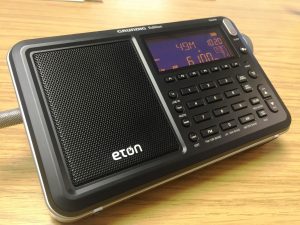
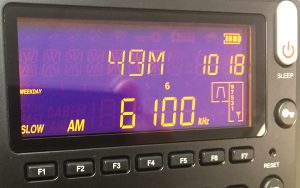
What about performance? I tested the Eton at the woods I use for DXing, with a 50 metre longwire. In the space of a couple of hours, I’d recorded ABC Northern Territories on 2325, 2485 and 4835 kHz, Pyongyang BS, North Korea on 3320 kHz, Angola on 4950 kHz, Guinea on 9650 kHz and a weak signal from the Solomon Islands on 5020 kHz. The signals from ABC on 2485 kHz, Angola and Guinea were stronger and clearer than I’d ever heard previously. Pyongyang on 3320 kHz and the Solomon Islands were personal firsts.
The Eton performed way beyond my expectations and I hope this post will go some way to restoring the repuation of this brilliant little radio, which in my opinion fully deserves to be called a Satellit. More testing is necssary, including direct comparisons with other receivers – all of that to come in due course. Text links and embedded reception videos follow. Thanks for reading/watching/listening and I wish you all great DX!
- The Eton Satellit; is it any good? Let’s start with ABC Northern Territories on 120 metres…
- The Eton Satellit; is it any good? Rádio Nacional de Angola 4950 kHz…wonderfully clear
- The Eton Satellit; is it any good? Moving on to ABC Northern Territories 2325 kHz…
- The Eton Satellit, First reception of Solomon Islands BC, 5020 kHz (requires headphones)
- The Eton Satellit; Radio Guinée 9650 kHz Conakry, Guinea, armchair copy
- The Eton Satellit: Pyongyang Broadcasting Station 3320 kHz, North Korea
Click here to view on YouTube.
Click here to view on YouTube.
Click here to view on YouTube.
Click here to view on YouTube.
Click here to view on YouTube.
Click here to view on YouTube.
Clint Gouveia is the author of this post and a regular contributor to the SWLing Post. Clint actively publishes videos of his shortwave radio excursions on his YouTube channel: Oxford Shortwave Log. Clint is based in Oxfordshire, England.
Free job and accommodation for couple willing to live on this island
When I first saw this item on Popular Mechanics, I spent a bit of time fantasizing about an interference-free half year DXpedition:
This Tasmanian Island Will Give Any Couple Willing to Move There a House and Job
Depending on how strong your relationship is, this will either sound like a romantic six-month getaway or the plot of The Shining. According to The Telegraph, Tasmania Parks and Wildlife Service is looking for couples to apply to be caretakers of Maatsuyker Island, a 460-acre island located six miles off the southern coast of Tasmania, for periods from March to September or September to March for the next two years.
For “safety reasons,” they are actually encouraging couples to apply together if they “can demonstrate they have spent time together in a remote setting,” according to the application.
So whats’ the catch? If selected, the only time you could leave the island during your six month stay would be a helicopter evacuation in case of an emergency. Otherwise you’ll be completely cut off from the mainland. Did I mention there’s no internet or TV?
But if you’re okay living on a “sometimes wet and often windswept island” with minimal contact from anyone else, this might be the job for you.[…]
Click here to continue reading the full article at Popular Mechanics.

Aerial view of the southern coast of Tasmania. In the background South East Cape, in the foreground the Maatsuyker Islands (Needle Rocks are on the right; just to the left of them is Maatsuyker Island; De Witt is the larger island on the left). Artificial view generated from satellite data. (Source: Wikipedia)
Remember Tristan Da Cunha?
This article reminds me of our first Reader Challenge: One year, one radio, one (very) remote island where we imagined spending a year on the most remote populated island on earth: Tristan Da Cunha.
The responses for this challenge were amazing and diverse. But Tristan’s population is about 300 people–we’re talking about a Tasmanian island with no population other than you and your spouse!
Since the Tristan Da Cunha radio challenge, technology has changed quite a bit. I wonder what gear we’d choose in 2017?
Post readers: Would anyone else jump at the opportunity to live cut off from humanity for six months? What radio gear would you take?
Dean: An intrepid young DXer!
UPDATE (28 October 2017): We’ve updated links to Dean’s website to reflect his new URL.
A few weeks ago, I received a message from SWLing Post reader, Dean Denton, who lives in Hull, UK. Dean is not your typical contemporary shortwave listener–he’s twelve years old and has been DXing since the age of eight! While, decades ago, that used to be the norm–indeed, I started SWLing at eight–Dean is bucking the trend in 2017.
Dean’s listening post consists of a few receivers: the Tecsun PL-660, a Tesco RAD 108, a Uniden UBC360CLT and a Hitachi TRK P65E. Dean also spends a great deal of time on the excellent University of Twente WebSDR.
Dean noted in a recent message:
“I typically love a lot of broadcasters, but generally China Radio International, Radio Romania International, BBC, Voice of America plus many more. I like talk and news on shortwave radio as it gives an insight of a typical country’s actions.
I also love music on shortwave due to Amplitude Modulation and its characteristics. Not to mention Pirate Radio, HAM Radio, Numbers Stations and anything else.”
Dean, you’re a kindred spirit indeed–to me, there’s nothing like the sound of music via the “sonic texture” of shortwave radio.
Not only is Dean a radio enthusiast, but he also started a website and is building a library of videos on his YouTube channel. Indeed, most recently, he’s been experimented with Narrow Band TV on his YouTube channel.
While looking through his channel, I found this screencast and recording he made as France Inter shut down their 162 kHz longwave service as 2016 came to a close:
https://www.youtube.com/watch?v=F2ZQSqxxKtY
Click here to view on YouTube.
Dean, keep us informed about your DXing adventures and don’t hesitate to ask questions!
Post readers: Let’s officially welcome Dean into our community! While you’re at it, check out his website and YouTube channel!
Letter from Australian Leader of the Opposition to the Prime Minister regarding NT shortwave service
Many thanks to SWLing Post contributor, Phil Brennan, who shares the following letter sent to The Hon Malcolm Turnbull MP, Prime Minister, by Bill Shorten MP, Leader of the Opposition:
The Hon Malcolm Turnbull MP Prime Minister
Parliament House
Canberra ACT 2600Dear Prime Minister
I write in relation to the Australian Broadcasting Corporation’s (ABC) decision to cease its shortwave transmission service in the Northern Territory from 31 January 2017.
My letter follows repeated representations from members of my Shadow Ministry, Northern Territory Caucus and the Minister for Indigenous Affairs Senator Nigel Scullion to secure the continuation of this vital service.
As you know, shortwave radio provides vital news and information services, including local radio and emergency messages that are crucial to those living in remote areas, particularly in time of natural disaster.
The ABC’s claim that the majority of listeners will be able to access ABC services via AM/FM radio, digital radio and online streaming, or via VAST platform does not account for the reality of service availability in remote areas.
This helps to explain why listeners and users of the ABC shortwave in the Northern Territory have been unequivocal in voicing their concern at the Coalition’s failure to intervene in this matter. This includes emergency services workers and cattle growers.
I am also deeply concerned that the ABC took this decision without satisfactory consultation with affected listeners, community representatives and emergency service workers and agencies. ABC Managing Director, Michelle Guthrie, has since acknowledged shortfalls in this regard.
For these reasons I ask that you work with Labor, ABC management and local stakeholders as a matter of urgency to ensure the continued provision of shortwave radio service in the NT beyond 31 January 2017.
Yours sincerely
Bill Shorten MP
Leader of the Opposition
Shadow Minister for Indigenous Affairs and Aboriginal and Torres Strait Islanders26 January 2017
cc: The Hon Mark Dreyfus MP, QC Mr Stephen Jones MP
Senator Malarndirri McCarthy Hon Warren Snowdon MP
Mr Luke Gosling OAM, MP Senator the Hon Nigel Scullion
Click here to download the original PDF version of this letter.

